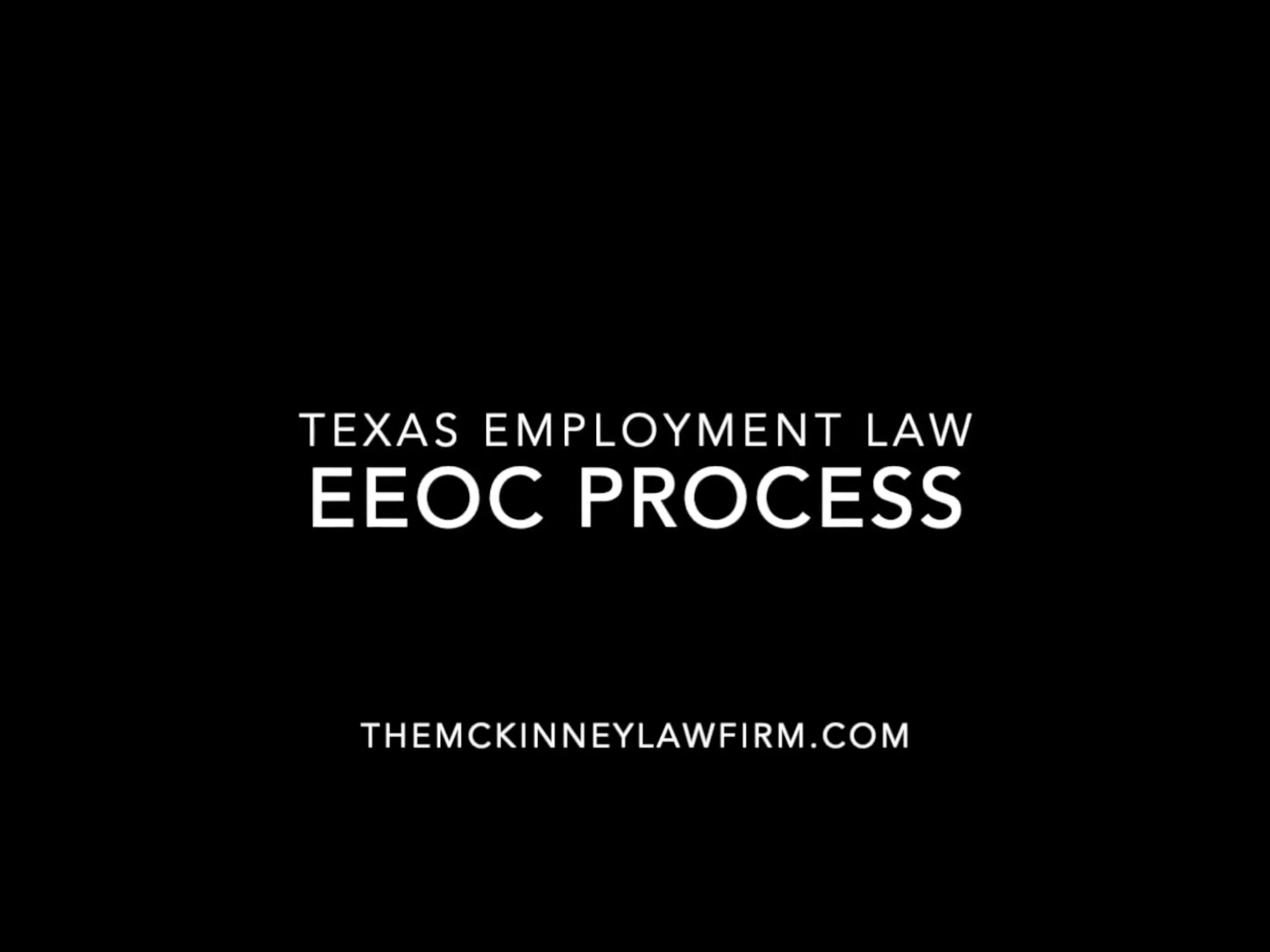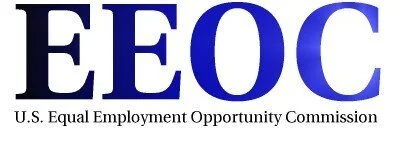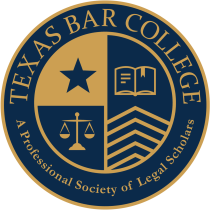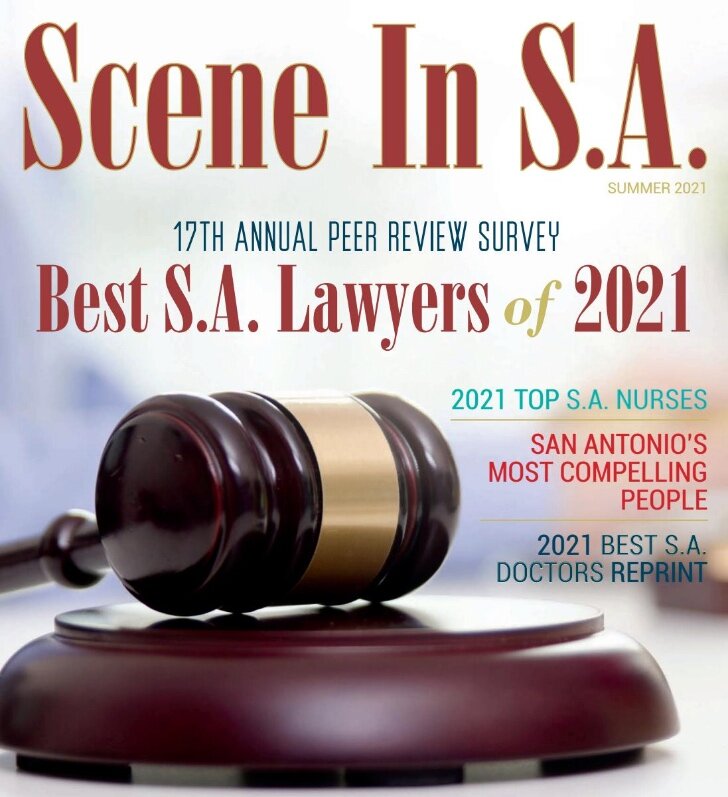The EEOC recently issued Enforcement Guidance on pregnancy discrimination for the first time in over thirty years. The guidance suggests that the Pregnancy Discrimination Act’s (“PDA”) coverage may be much broader and provide workers much more protection than many employers previously thought. The Enforcement Guidance updates prior guidance on this subject in light of legal developments over the past thirty years.
The guidance (full copy of which can be found here) includes discussions of:
when employer actions may constitute unlawful discrimination on the basis of pregnancy, childbirth, or related medical conditions in violation of Title VII of the Civil Rights Act of 1964 (Title VII), as amended by the Pregnancy Discrimination Act of 1978 (PDA);
the obligation of employers under the PDA to provide pregnant workers equal access to benefits of employment such as leave, light duty, and health benefits; and
how Title I of the Americans with Disabilities Act (ADA), which went into effect over a decade after the PDA and was amended in 2008 to broaden the definition of disability, applies to individuals with pregnancy-related impairments.
The PDA clarifies that discrimination based on pregnancy, childbirth, or related medical conditions is a prohibited form of sex discrimination. It requires that employers treat women affected by pregnancy or related medical conditions the same way they treat non-pregnant applicants or employees who are similar in their ability or inability to work.
Title I of the ADA prohibits employment discrimination on the basis of disability and requires covered employers to provide reasonable accommodations to the known limitations of otherwise qualified employees and applicants for employment. Although pregnancy itself is not a disability, impairments related to pregnancy can be disabilities if they substantially limit one or more major life activities or substantially limited major life activities in the past. The ADA also covers pregnant workers who are regarded as having disabilities.
Both the PDA and the ADA apply to private and state and local government employers with 15 or more employees, labor organizations, employment agencies, and apprenticeship and training programs. The PDA applies to employees in the federal sector, as does Section 501 of the Rehabilitation Act of 1973, which applies the ADA’s employment nondiscrimination standards. Beyond these federal laws, state and local laws in some jurisdictions provide additional protections.
With this new guidance in mind, here are some EEOC answers to some commonly asked questions regarding pregnancy discrimination and the Pregnancy Discrimination Act (“PDA”):
General Prohibitions and Requirements
Under the PDA, an employer cannot fire, refuse to hire, demote, or take any other adverse action against a woman if pregnancy, childbirth, or a related medical condition was a motivating factor in the adverse employment action. The PDA prohibits discrimination with respect to all aspects of employment, including pay, job assignments, promotions, layoffs, training, and fringe benefits (such as leave and health insurance).
Yes. The PDA’s protection extends to differential treatment based on an employee’s fertility or childbearing capacity. Thus sex-specific policies restricting women from certain jobs based on childbearing capacity, such as those banning fertile women from jobs with exposure to harmful chemicals, are generally prohibited. An employer’s concern about risks to a pregnant employee or her fetus will rarely, if ever, justify such restrictions. Sex-specific job restrictions can only be justified if the employer can show that lack of childbearing capacity is a bona fide occupational qualification (BFOQ), that is, reasonably necessary to the normal operation of the business. (See also Question 7, below.)
An employer is also prohibited from discriminating against an employee because she has stated that she intends to become pregnant. Thus, demoting an employee with a good performance record two weeks after she informed her manager that she was trying to become pregnant would constitute evidence of pregnancy discrimination.
Although Title VII does not prohibit employers from asking applicants or employees about gender-related characteristics such as pregnancy, such questions are generally discouraged. The EEOC will consider the fact that an employer has asked such a question when evaluating a charge alleging pregnancy discrimination. Adverse decisions relating to hiring, assignments, or promotion, that are based on an employer’s assumptions or stereotypes about pregnant workers’ attendance, schedules, physical ability to work, or commitment to their jobs, are unlawful.
Yes. An employee or applicant may not be subjected to discrimination because of a past pregnancy, childbirth, or related medical condition. For example, an employer would violate the PDA by terminating an employee shortly after she returns from medically-related pregnancy leave following the birth of her child if the employee’s pregnancy is the reason for the termination. Close proximity between the employee’s return to work and the employer’s decision to terminate her, coupled with an explanation for the termination that is not believable (e.g., unsubstantiated performance problems by an employee who has always been a good performer), would constitute evidence of pregnancy discrimination.
Medical conditions related to pregnancy may include symptoms such as back pain; disorders such as preeclampsia (pregnancy-induced high blood pressure) and gestational diabetes; complications requiring bed rest; and the after-effects of a delivery. (For information about the application of the ADA to pregnancy-related medical conditions, see Question 18, below.)
Lactation is also a pregnancy-related medical condition. An employee who is lactating must be able to address lactation-related needs to the same extent as she and her coworkers are able to address other similarly limiting medical conditions. For example, if an employer allows employees to change their schedules or use sick leave for routine doctor appointments and to address non-incapacitating medical conditions, then it must allow female employees to change their schedules or use sick leave for lactation-related needs.
In addition to being protected under the PDA, female hourly employees who are breastfeeding have rights under other laws, including a provision of the Patient Protection and Affordable Care Act that amended the Fair Labor Standards Act to require employers to provide reasonable break time and a private place for breastfeeding employees to express milk. The Department of Labor has published a Fact Sheet providing general information on the break time requirement for nursing mothers. The Fact Sheet can be found at http://www.dol.gov/whd/regs/compliance/whdfs73.htm.
Workers with Caregiving Responsibilities
Discrimination based on an employee’s caregiving responsibilities may violate Title VII if it is based on sex. For instance, an employer would violate Title VII by denying job opportunities to women, but not to men, with young children, or by reassigning a woman who has recently returned from maternity leave to less desirable work based on the assumption that, as a new mother, she will be less committed to her job. Although leave related to pregnancy, childbirth, or related medical conditions can be limited to women affected by those conditions, if an employer provides parental leave, it must be provided to similarly situated men and women on the same terms. In addition, employers covered by the Family and Medical Leave Act (FMLA) must provide eligible employees with up to 12 weeks of job-protected leave to care for and bond with a newborn baby or a recently adopted child. Discrimination based on an employee’s caregiving responsibilities may violate the ADA if it is based on the employee’s relationship with an individual with a disability. See Question 22, below.
Concerns About Safety and Ability to Perform the Job
Yes. Although an employer may, of course, require that a pregnant worker be able to perform the duties of her job, adverse employment actions, including those related to hiring, assignments, or promotion, that are based on an employer’s assumptions or stereotypes about pregnant workers’ attendance, schedules, physical ability to work, or commitment to their jobs, are unlawful. Even when an employer believes it is acting in an employee’s best interest, adverse actions based on assumptions or stereotypes are prohibited. For instance, it is unlawful for an employer to involuntarily reassign a pregnant employee to a lower paying job involving fewer deadlines based on an assumption that the stress and fast-paced work required in her current job would increase risks associated with her pregnancy.
An employer may only reassign a pregnant worker based on concerns about her health or the health of her fetus if it can establish that non-pregnancy or non-fertility is a BFOQ as described in Question 2, above. In very few, if any, situations will an employer be able to establish this defense.
No. Just as an employer cannot refuse to hire or retain a pregnant woman because of its own prejudices against pregnant women, it cannot take an adverse action against a pregnant worker because of the prejudices of co-workers, clients, or customers. For instance, an employer may not place a pregnant worker who can perform her job on leave based on her co-workers’ belief that she will place additional burdens on them and interfere with their productivity.
Harassment
Yes. Unwelcome and offensive jokes or name-calling, physical assaults or threats, intimidation, ridicule, insults, offensive objects or pictures, and interference with work performance that is motivated by pregnancy, childbirth, or related medical conditions may constitute unlawful harassment. Whether the conduct is sufficiently hostile to constitute unlawful harassment depends on factors such as the frequency of the conduct or its severity. Employer liability can result from the conduct of supervisors, coworkers, or non-employees such as customers or business partners over whom the employer has some control.
Equal Access to Benefits
An employer is required under the PDA to treat an employee temporarily unable to perform the functions of her job because of her pregnancy or a related medical condition in the same manner as it treats other employees similar in their ability or inability to work, whether by providing modified tasks, alternative assignments, or fringe benefits such as disability leave.
Light Duty
Yes, if it provides light duty for employees who are not pregnant but who are similar in their ability or inability to work. An employer may not treat pregnant workers differently from employees who are similar in their ability or inability to work based on the cause of their limitations. For example, an employer may not deny light duty to a pregnant employee based on a policy that limits light duty to employees with on-the-job injuries.
No. Consistent with the language of the law, the EEOC’s position is that the PDA requires only that an employer treat pregnant workers the same as it treats workers who are not pregnant but who are similar in their ability or inability to work. Thus, an employer may offer light duty to pregnant employees on the same terms that it offers light duty to other workers similar in their ability or inability to work. For example, if an employer’s policy places certain types of restrictions on the availability of light duty positions, such as limits on the number of light duty positions or the duration of light duty, the employer may lawfully apply the same restrictions to pregnant workers as it applies to non-pregnant workers. If an employer does not provide light duty to employees who are not pregnant, it does not have to do so for pregnant workers.
Leave
No. An employer may not force an employee to take leave because she is or has been pregnant, as long as she is able to perform her job. Requiring leave violates the PDA even if the employer believes it is acting in the employee’s best interest. If an employee has been absent from work as a result of a pregnancy-related condition and then recovers, her employer may not require her to remain on leave until the baby’s birth; nor may an employer prohibit an employee from returning to work for a certain length of time after childbirth.
No. Under the PDA, an employer must allow women with physical limitations resulting from pregnancy to take leave on the same terms and conditions as others who are similar in their ability or inability to work. Thus, an employer:
may not fire a pregnant employee for being absent if her absence is covered by the employer’s sick leave policy;
may not require employees limited by pregnancy or related medical conditions to first exhaust their sick leave before using other types of accrued leave if it does not impose the same requirements on employees who seek leave for other medical conditions;
may not impose a shorter maximum period for pregnancy-related leave than for other types of medical or short-term disability leave; and
must allow an employee who is temporarily disabled due to pregnancy to take leave without pay to the same extent that other employees who are similar in their ability or inability to work are allowed to do so.
An employer must also hold open a job for a pregnancy-related absence for the same length of time that jobs are held open for employees on sick or temporary disability leave. If the pregnant employee used leave under the Family and Medical Leave Act (FMLA), the employer must restore the employee to her original job or to an equivalent job with equivalent pay, benefits, and other terms and conditions of employment.
Note that under the ADA, an employer may have to provide leave in addition to that provided under its normal leave policy as a reasonable accommodation for someone with a pregnancy-related impairment that is a disability. (For more information about the obligation to make reasonable accommodations under the ADA, see Questions 23–25, below.)
Under the PDA, leave related to pregnancy, childbirth, or related medical conditions may be limited to women affected by those conditions, but parental leave must be provided to similarly situated men and women on the same terms. If, for example, an employer extends leave to new mothers beyond the period of recuperation from childbirth, it cannot lawfully refuse to provide an equivalent amount of leave to new fathers for the same purpose. In addition, the FMLA requires covered employers to provide 12 weeks of job-protected leave for covered employees to care for and bond with a newborn baby or a recently adopted child.
Health Insurance
Yes. Employers who have health insurance benefit plans must apply the same terms and conditions for pregnancy-related costs as for medical costs unrelated to pregnancy. If the plan covers pre-existing conditions – as all health plans are required to do as of January 1, 2014, under the Patient Protection and Affordable Care Act – then it must cover the costs of an insured employee’s pre-existing pregnancy. If the plan covers a particular percentage of the medical costs incurred for nonpregnancy-related conditions, it must cover the same percentage of recoverable costs for pregnancy-related expenses.
Employers can violate the PDA by providing health insurance that excludes coverage of prescription contraceptives, whether the contraceptives are prescribed for birth control or for medical purposes. To comply with Title VII, an employer’s health insurance plan must cover prescription contraceptives on the same basis as prescription drugs, devices, and services that are used to prevent the occurrence of medical conditions other than pregnancy. For example, if an employer’s health insurance plan covers preventive care for medical conditions other than pregnancy, such as vaccinations, physical examinations, or prescription drugs to prevent high blood pressure or to lower cholesterol levels, then prescription contraceptives also must be covered.
In Burwell v. Hobby Lobby Stores, Inc., the Supreme Court recently ruled that the Patient Protection and Affordable Care Act’s contraceptive mandate violated the Religious Freedom Restoration Act (RFRA) as applied to closely held for-profit corporations whose owners had religious objections to providing certain types of contraceptives. EEOC’s Enforcement Guidance explains Title VII’s prohibition of pregnancy discrimination; it does not address whether certain employers might be exempt from Title VII’s requirements under the RFRA or under the Constitution’s First Amendment.
Proof of Pregnancy Discrimination
A PDA violation will be found if an employee’s pregnancy, childbirth, or related medical condition was a motivating factor in an adverse employment action. Evidence of discriminatory motive may include an explicit policy that treats pregnant workers less favorably; statements of decision-makers demonstrating pregnancy bias; close timing between an adverse action and a decision-maker’s knowledge of the employee’s pregnancy, childbirth, or related medical condition; and more favorable treatment of employees of either sex who are not affected by pregnancy but who are similar in their ability or inability to work.
Discrimination may also occur when a neutral policy or practice has a disparate (or disproportionate) impact on pregnant employees if an employer cannot show that the policy or practice is job related and consistent with business necessity. Examples may include policies that exclude all or substantially all pregnant employees from access to light duty or leave.
THE AMERICANS WITH DISABILITIES ACT
Covered Disabilities
In some circumstances, employees with pregnancy-related impairments may be covered by the ADA. Although pregnancy itself is not an impairment within the meaning of the ADA and thus is not a disability, pregnant workers and job applicants are not excluded from the ADA’s protections. Changes to the definition of the term “disability” resulting from the enactment of the ADA Amendments Act of 2008 make it much easier for individuals with pregnancy-related impairments to demonstrate that they have disabilities and are thus entitled to the ADA’s protection.
Pregnancy-related impairments are disabilities if they substantially limit one or more major life activities or substantially limited major life activities in the past. Major life activities that may be affected by pregnancy-related impairments include walking, standing, and lifting, as well as major bodily functions such as the musculoskeletal, neurological, cardiovascular, circulatory, endocrine, and reproductive functions. The term disability should be construed broadly, and the determination of whether someone has a disability should not demand extensive analysis. An impairment does not have to prevent, or severely or significantly restrict, performance of a major life activity to be considered substantially limiting, and impairments of short duration that are sufficiently limiting can be disabilities.
The ADA also covers pregnant workers who are regarded as having disabilities. An employer regards a pregnant worker as having a disability if it takes an adverse action against her (e.g., refuses to hire or terminates her) because of an actual or perceived pregnancy-related impairment, unless the employer can demonstrate that the impairment is transitory (lasting or expected to last for six months or less) and minor.
Examples of pregnancy-related impairments that may substantially limit major life activities include pelvic inflammation, which may substantially limit the ability to walk, or pregnancy-related carpal tunnel syndrome affecting the ability to lift or to perform manual tasks. Impairments that may substantially limit reproductive functions include disorders of the uterus or cervix that may necessitate certain physical restrictions to enable a full term pregnancy, or may result in limitations following childbirth. Pregnancy-related impairments that may substantially limit other major bodily functions include pregnancy-related sciatica limiting musculoskeletal functions; gestational diabetes limiting endocrine function; and preeclampsia, which causes high blood pressure, affecting cardiovascular and circulatory functions.
An employer discriminates against an applicant or employee on the basis of her record of a disability when it takes an adverse action against her because of a past substantially limiting impairment. For instance, an employer would violate the ADA by denying employment to a job applicant based on a history of gestational diabetes that resolved itself following the birth of her child three years earlier.
An employer regards a pregnant applicant or employee as having a disability if it takes a prohibited action because of an actual or perceived pregnancy-related impairment that is not both transitory (lasting or expected to last six months or less) and minor. For instance, if an employer makes an adverse employment decision such as involuntarily reassigning a pregnant employee to a lower paying, less physically demanding position because it believes that the employee is experiencing pregnancy-related “complications,” it regards the employee as having a disability. The employer would be liable for discrimination if the employee is able to do the essential functions of her job without posing a “direct threat” (i.e., a significant risk of substantial harm) to herself or others.
Yes. The ADA prohibits discrimination against individuals who have a known “association” with an individual with a disability. Thus, for example, an employer would violate the ADA by refusing to hire the mother or father of a newborn with a disability because it was concerned that the applicant would take a lot of time off to care for the child or that the child’s medical condition would impose high health care costs.
Pregnancy and Reasonable Accommodation
A reasonable accommodation is a change in the workplace or in the way things are customarily done that enables an individual with a disability to apply for a job, perform a job’s essential functions, or enjoy equal benefits and privileges of employment.
Yes, if the accommodation is necessary because of a pregnancy-related impairment that substantially limits a major life activity. An employer may only deny a needed reasonable accommodation to an employee with a disability who has asked for one if it would result in an undue hardship. An undue hardship is defined as an action requiring significant difficulty or expense.
Examples of reasonable accommodations that may be necessary for someone whose pregnancy-related impairment is a disability include:
Redistributing marginal or nonessential functions (for example, occasional lifting) that a pregnant worker cannot perform, or altering how an essential or marginal function is performed;
Modifying workplace policies, such as allowing a pregnant worker more frequent breaks or allowing her to keep a water bottle at a workstation even though keeping drinks at workstations is generally prohibited;
Modifying a work schedule so that someone who experiences severe morning sickness can arrive later than her usual start time and leave later to make up the time;
Allowing a pregnant worker placed on bed rest to telework where feasible;
Granting leave in addition to what an employer would normally provide under a sick leave policy;
Purchasing or modifying equipment, such as a stool for a pregnant employee who needs to sit while performing job tasks typically performed while standing; and
Temporarily reassigning an employee to a light duty position.
THE FAMILY AND MEDICAL LEAVE ACT
Yes. Although Title VII does not require an employer to provide pregnancy-related or child care leave if it provides no leave for other temporary illness or family obligations, employers covered by the FMLA (those with 50 or more employees) must provide eligible employees with up to 12 weeks of leave in a 12-month period for the birth of a child and to care for a newborn child, for the placement with the employee of a child for adoption or foster care or to care for the newly placed child, for the employee’s own serious health condition, or for the employee to care for a spouse or child who has a serious health condition. Employees with such a need for family or medical leave are eligible if they worked for a covered employer for a year and for at least 1,250 hours during the immediately preceding year. The FMLA is enforced by the U.S. Department of Labor. For more information about the FMLA see http://www.dol.gov/whd.






















